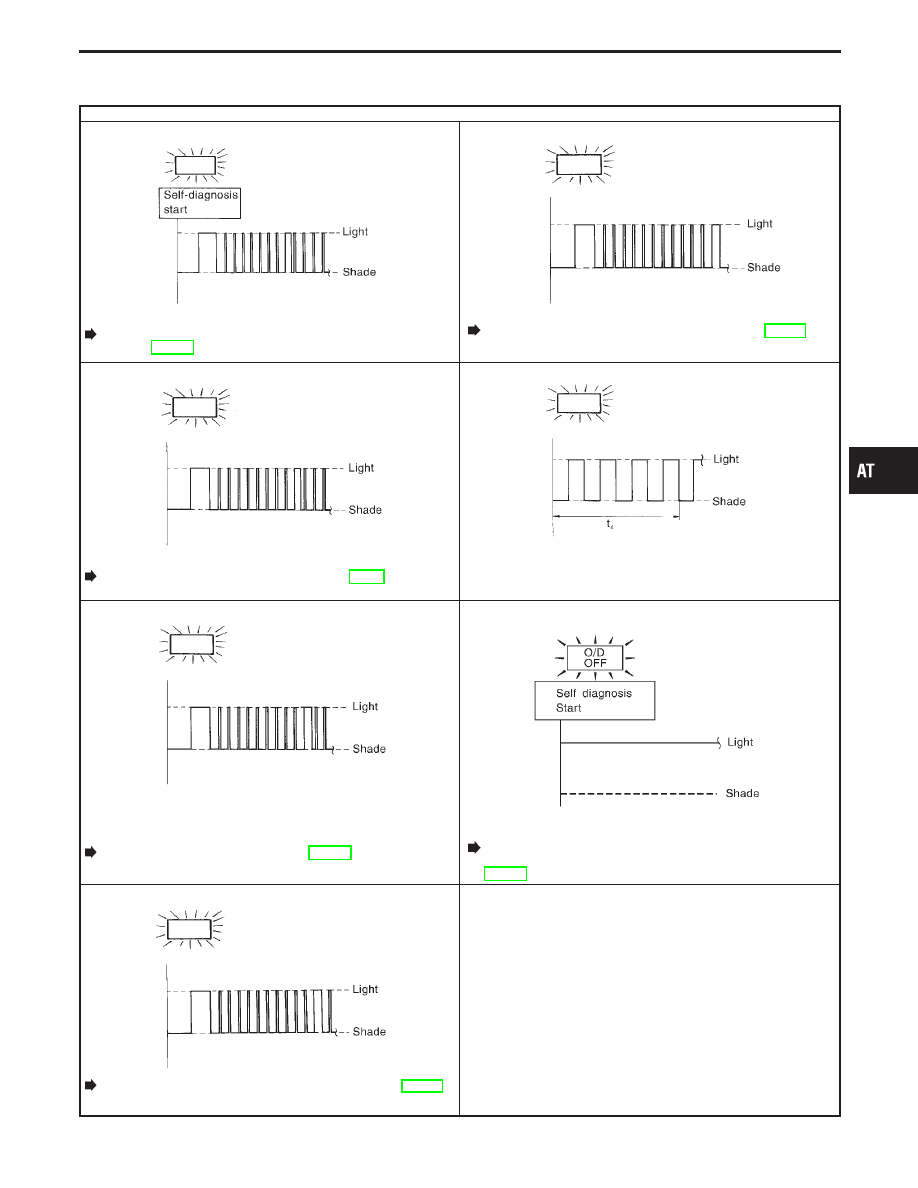Infiniti Q45 (FY33). Manual - part 14

O/D OFF indicator lamp
8th judgement flicker is longer than others.
SAT674I
A/T fluid temperature sensor is disconnected or TCM power
source circuit is damaged.
Go to A/T Fluid Temperature Sensor and TCM Power
Source, AT-147.
12th judgement flicker is longer than others.
SAT678I
The ECM-A/T communication line is open or shorted.
Go to A/T Communication Line (DTC: P0504), AT-157.
9th judgement flicker is longer than others.
SAT675I
Engine speed signal circuit is short-circuited or disconnected.
Go to Engine Speed Signal (DTC: 1207), AT-92.
Flickers as shown below.
SAT679I
Battery power is low.
Battery has been disconnected for a long time.
Battery is connected conversely.
(When reconnecting TCM connectors. — This is not a prob-
lem.)
10th judgement flicker is longer than others.
SAT676I
Turbine revolution sensor circuit is short-circuited or discon-
nected.
Go to Turbine Revolution Sensor, AT-154.
Lamp comes on.
SAT367J
PNP switch, overdrive control switch or throttle position switch
circuit is disconnected, or TCM is damaged.
Go to 21. TCM Self-diagnosis Does Not Activate (PNP,
Overdrive Control and Throttle Position Switches),
AT-177.
11th judgement flicker is longer than others.
SAT677I
Line pressure solenoid valve circuit is short-circuited or discon-
nected.
Go to Line Pressure Solenoid Valve (DTC: 1205), AT-125.
t
4
= 1.0 second
GI
MA
EM
LC
EC
FE
PD
FA
RA
BR
ST
RS
BT
HA
EL
IDX
ON BOARD DIAGNOSTIC SYSTEM DESCRIPTION
Diagnostic Procedure without CONSULT-II
(Cont’d)
AT-53